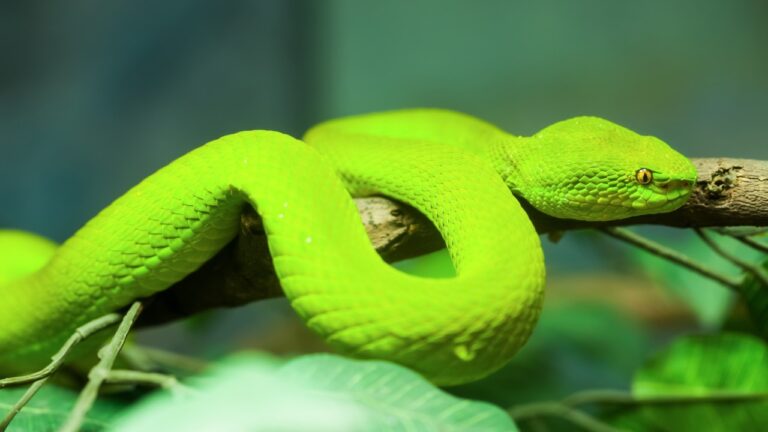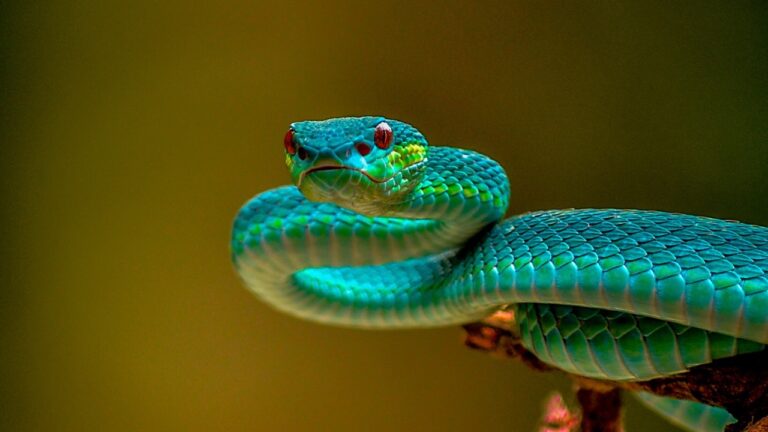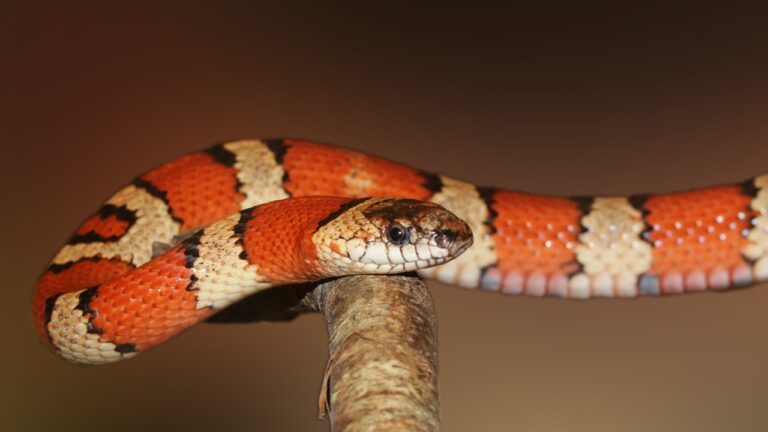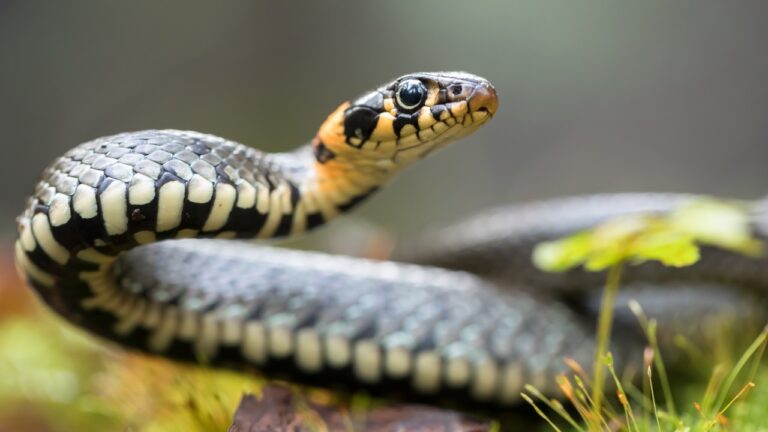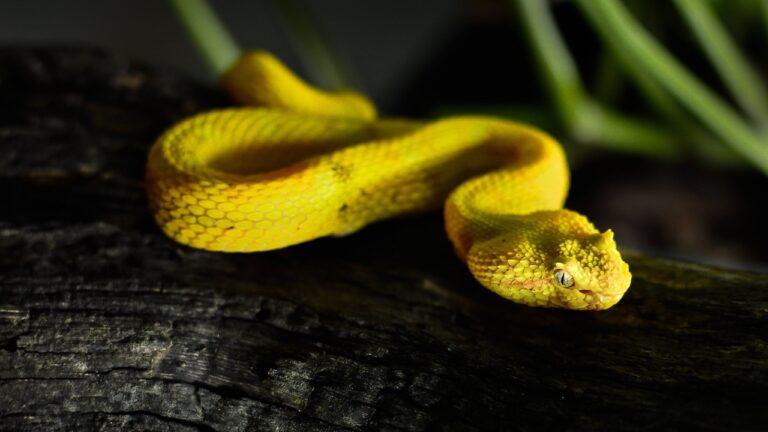Snake Diet: Essential Nutrition Basics for Reptile Enthusiasts
Overview of the Snake Diet
Feeding snakes is a topic that often stirs up intrigue and curiosity. Unlike the diet of many common pets, the snake diet is unique and specialized, reflecting the distinctive physiology and natural behaviors of these fascinating reptiles. The diet primarily consists of whole prey items, embodying the snake’s carnivorous nature. This can range from small rodents like mice and rats, to larger prey such as birds and rabbits, depending on the snake’s size and species. Explore more about snake food for a deeper understanding of the snake diet.
Importance of Nutrition for Snakes
The role of nutrition in a snake’s life cannot be overstated. Just like any living creature, snakes require a balanced and nutritious diet to maintain their health and vitality. Proper nutrition is critical for a variety of physiological functions such as growth, metabolism, and reproduction. It also directly impacts the snake’s immune function which helps in fending off diseases. Visit the snake nutrition page for more in-depth information about the importance of nutrition for snakes.
However, feeding snakes is not as simple as just providing them with prey. It’s about understanding the specific dietary needs of the species, the suitable size of the prey, the frequency of feeding, and even the method of offering the food. It is essential to remember that improper feeding can lead to various health issues such as obesity, malnutrition, and other digestive problems.
Therefore, as a snake owner or a reptile enthusiast, it’s crucial to comprehend the basics of a snake diet and learn how to responsibly cater to their nutritional needs. This understanding will not only contribute to the snake’s well-being but also enhance the bond between you and your scaly friend. So let us delve into the world of snake diets and unravel the secrets of feeding these magnificent creatures.
Understanding a Snake’s Dietary Needs
The Carnivorous Nature of Snakes
As enthusiasts, it’s crucial to understand the carnivorous nature of snakes. These slithering creatures are obligate carnivores, meaning they exclusively consume other animals for sustenance. Their highly specialized dietary habits are a result of millions of years of evolution, making them efficient hunters and opportunistic feeders. Unlike omnivorous or herbivorous animals, snakes have a unique physiological makeup, including a snake digestive system adapted to process animal protein.
Types of Prey Consumed by Snakes
Snakes’ diets can vary significantly based on their species, size, and habitat. However, most snakes primarily consume rodents such as mice and rats. Larger snake species, like pythons and anacondas, are known to feast on larger prey including rabbits, birds, and even deer. Some snake species specialize in other types of snake prey like eggs, insects, fish, or amphibians.
It’s crucial to consider the natural diet of your snake species when providing captive food, to replicate their wild feeding habits as closely as possible. This approach ensures they receive the necessary nutrients and can also help promote natural hunting behaviors, contributing to their overall health and well-being.
Nutritional Content of a Snake’s Diet
The nutritional content of a snake’s diet is rich in protein and fat, providing them with the energy they require for growth and metabolic functions. The ratio of protein, fat, and other nutrients varies depending on the type of prey consumed. For instance, rodents are high in protein and fat, while fish provide a different set of nutrients including essential fatty acids.
Here is a simple table illustrating the approximate nutritional composition of some common snake prey:
| Prey Type | Protein (%) | Fat (%) |
|———–|————-|———|
| Mouse | 55-60 | 20-25 |
| Rat | 60-65 | 25-30 |
| Fish | 50-55 | 15-20 |
These figures underline the importance of understanding your snake’s particular dietary needs. It’s essential to provide a balanced diet that is not only species-appropriate but also takes into account the age, size, and health status of the snake. For a deeper dive into snake nutrition, check out this comprehensive guide on snake nutrition.
In the next section, we will delve into the feeding schedule for snakes, another crucial aspect of their diet and overall care.
Feeding Schedule for Snakes
Frequency of Feeding
The frequency of feeding is a fundamental aspect of snake care. It varies depending on the species, age, and health condition of the snake. Younger snakes typically require more frequent feeding, often every 5 to 7 days, to support their rapid growth and development. In contrast, adult snakes can be fed less frequently, usually every 10 to 14 days. During their dormant period or brumation, which is akin to hibernation in mammals, some snakes may not eat at all for several weeks.
The frequency of feeding is not merely about maintaining the energy levels of your pet snake. It also plays a crucial role in the snake’s overall health and well-being. Overfeeding can lead to obesity, a condition that can have detrimental consequences for a snake’s health. It can lead to fatty liver disease, joint issues, and even shorten their lifespan. On the other hand, underfeeding can result in malnourishment and its associated health issues. Therefore, a balanced feeding schedule is key. More detailed information about the snake feeding schedule can help you ensure your snake’s nutritional needs are met.
Size and Type of Prey Based on Snake’s Size and Species
The size and type of prey that snakes consume depend on their size and species. Snakes are obligate carnivores, which means they primarily eat other animals. Their diet in the wild consists of a variety of prey including rodents, birds, eggs, insects, and even other reptiles. In captivity, the most commonly fed prey are mice and rats due to their nutritional completeness.
When it comes to the size of the prey, a good rule of thumb is that the prey should not be wider than the widest part of the snake’s body. Feeding prey that is too large can cause serious health issues for the snake, such as regurgitation or even internal damage.
Different snake species have different dietary preferences, which can be attributed to their natural habitats and hunting strategies. For instance, the diet of a Corn Snake primarily consists of small rodents, while the King Cobra predominantly feeds on other snakes. Understanding the natural diet of your snake’s species is crucial for providing a suitable diet in captivity. You can refer to this snake feeding guide for more insights.
In conclusion, understanding and meeting the dietary needs of your snake is not a straightforward task. It requires knowledge of the snake’s species, age, and health condition, as well as careful observation of the snake’s behavior and physical condition. By doing so, you can ensure your snake leads a healthy and fulfilled life.
In the next section, we will dispel some common myths about snake diets to further enhance your understanding of snake nutrition.
Common Myths About Snake Diets
Do snakes need to drink water?
Contrary to popular belief, snakes do require water to survive. This is a common misconception largely due to the fact that snakes, unlike mammals, do not lap up water with their tongues. Instead, they immerse their mouths and swallow it directly. Water is essential for their overall health and well-being, aiding in the digestion process, hydration, and even shedding their skin.
Snakes in the wild often live in environments where water is readily available, either from a nearby stream or collected dew. In captivity, providing your snake with a shallow dish of fresh water will suffice. It is crucial to monitor and replenish this regularly to ensure your snake stays hydrated. For more on this, refer to our comprehensive snake feeding guide.
Can snakes eat human food?
Another widespread myth is that snakes can consume and digest human food. While it may seem plausible, particularly given the variety of foods we consume, this is, in fact, not accurate. Snakes are obligate carnivores, meaning their diet consists entirely of animal matter. The carnivorous nature of these creatures is a fundamental characteristic of their dietary needs, and one that should be respected to maintain their health.
A snake’s diet in the wild consists of small to medium-sized prey such as rodents, birds, and even other reptiles. Their bodies are specifically adapted to digest these types of food, with a snake digestive system designed to break down and absorb the nutrients from their prey whole.
Human food, on the other hand, is typically processed and cooked, often containing additives, preservatives, and other elements not found in a snake’s natural diet. These foods can cause serious harm to a snake’s digestive system and overall health. Instead, feed your snake with appropriate snake food to ensure they receive the right balance of nutrients and snake vitamins.
In conclusion, embracing the truth behind these myths is essential for responsible snake ownership. By doing so, we can provide our snakes with the proper care, feeding, and hydration they require to live healthy, thriving lives.
Tips for Feeding Your Snake
As a reptile enthusiast, it’s crucial that you understand not only what to feed your serpent, but also how to do so in a safe and effective manner. This section delves into the essentials of safe handling of prey, adept feeding techniques, and the importance of monitoring your snake’s weight and health.
Safe Handling of Prey
Handling prey safely is a fundamental aspect of snake ownership. While the majority of snakes subsist on a diet of rodents, it’s advisable to use tongs or forceps when offering this snake food to your pet. This not only ensures your safety, but it also mimics the movement of live prey, stimulating the snake’s natural hunting instincts.
If your snake’s diet includes frozen prey, always ensure that it is thoroughly defrosted before feeding. This can be achieved by placing the frozen prey in a plastic bag and immersing it in warm water. Never microwave or cook the prey, as this can alter its nutritional content, making it less beneficial for your snake.
Feeding Techniques
Understanding the most effective snake feeding techniques can greatly enhance your pet’s overall health and satisfaction. Start by introducing the prey with a gentle movement to trigger the snake’s predatory response. If the snake does not strike, leave the prey in a secluded part of the terrarium and give the snake some privacy.
Some snakes may be reluctant to eat, particularly during shedding or if they’re stressed. In such cases, try altering the feeding schedule, size, or type of prey. It’s also worth noting that it is generally not recommended to handle your snake for at least 24 hours after feeding to prevent regurgitation.
Monitoring Your Snake’s Weight and Health
Just like any other pet, it’s crucial to keep a close eye on your snake’s weight and overall health. Regular check-ups can help identify any potential issues early on, such as obesity or malnutrition. A healthy snake should have a well-rounded body with no visible backbone or snake fat deposits.
If you notice any discrepancies in your snake’s weight or health, it’s advisable to consult a veterinarian experienced with reptiles. Changes in feeding behavior, skin condition, or activity level can all indicate underlying health issues.
Remember, a well-fed snake is a happy snake. By adhering to these guidelines, you can ensure your pet snake thrives, maintaining a balanced diet and a healthy lifestyle.
In the next section, we will debunk some common myths about snake diets. Don’t miss out on this informative read!
Conclusion
Recap of Snake Diet Basics
In recapitulation, a comprehensive understanding of snake diet basics is essential for every serpent enthusiast. The carnivorous nature and diverse diet of snakes are evident in their consumption of a variety of prey, each with its unique nutritional value. This provides the necessary snake protein and snake vitamins that fuels their physiological processes.
The snake feeding schedule plays a significant role in maintaining a healthy serpent. This involves the careful selection of the size and type of prey based on the snake’s size and species.
We have debunked common myths such as the misconception that snakes do not need to drink water and the ill-informed notion that they can eat human food. It’s crucial to note that the snake digestive system is uniquely adapted to handle specific prey and can’t process food meant for humans.
Encouragement for Responsible Snake Ownership
As a custodian of these fascinating creatures, it’s your responsibility to ensure they thrive in captivity. This means providing appropriate snake food, adhering to a regular feeding routine, and monitoring your snake’s weight and overall health.
Safe handling of prey and adept feeding techniques are integral to this process, ensuring the welfare of both the snake and its handler. Knowledge is power, and understanding your snake’s specific dietary needs can drastically improve its life quality.
Responsible snake ownership is a commitment that requires time, attention, and a profound respect for these enigmatic and often misunderstood creatures. By following the guidelines outlined in our snake feeding guide, you can ensure your slithering companion leads a healthy and fulfilling life.
In the end, remember, a well-fed snake is a happy snake. Embrace your role as a snake owner. Let’s champion the cause of these remarkable reptiles and their fascinating dietary habits.


